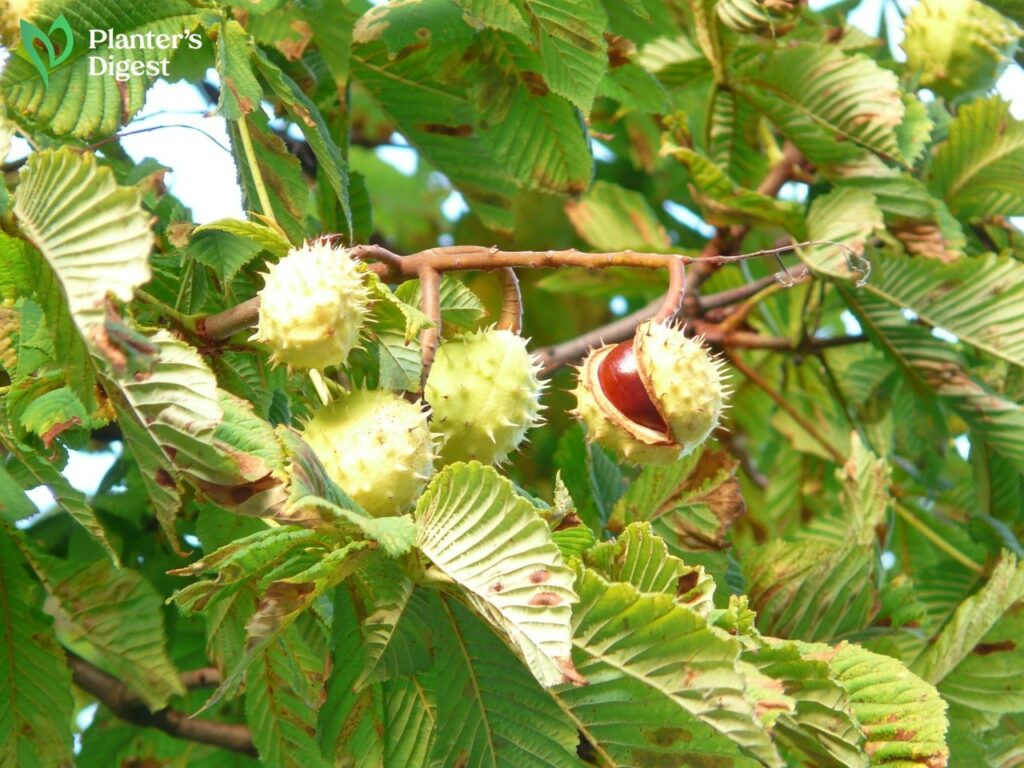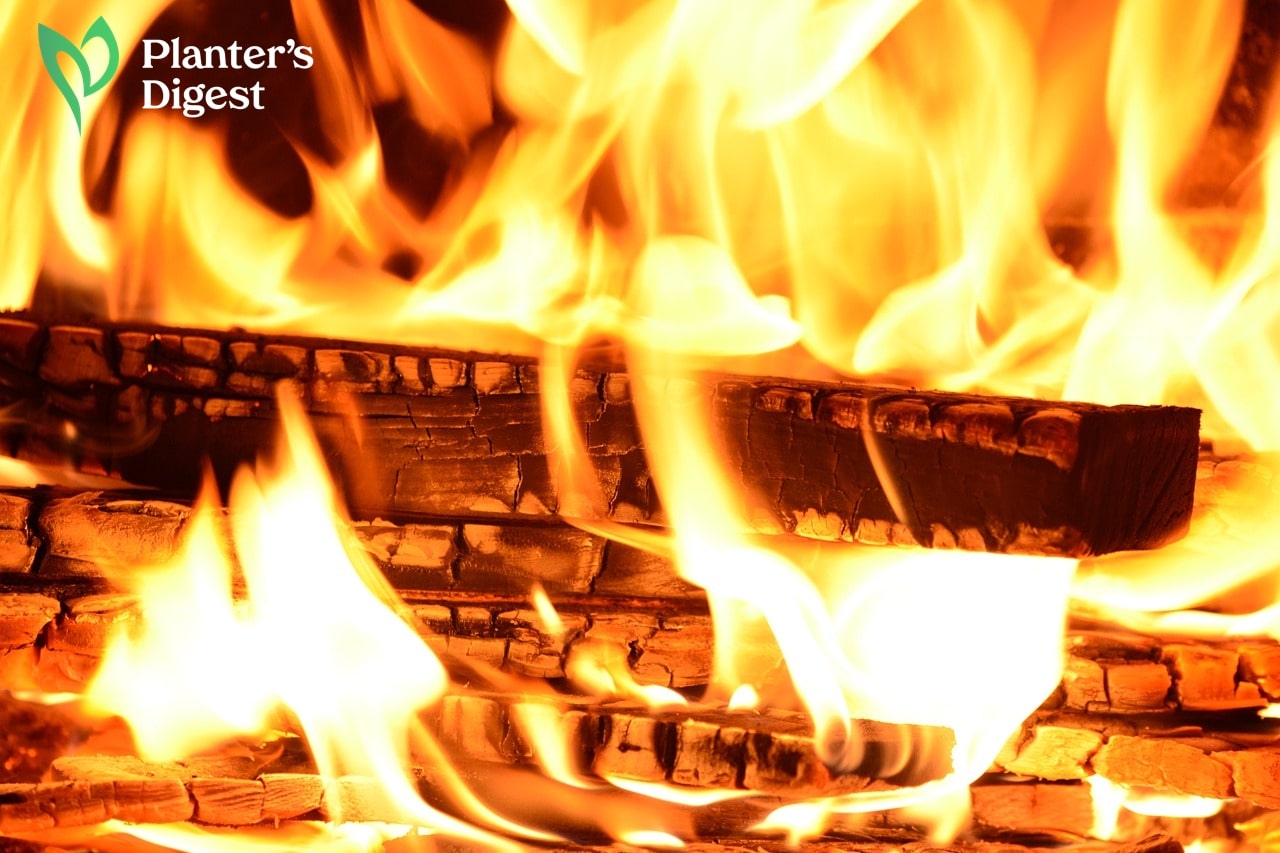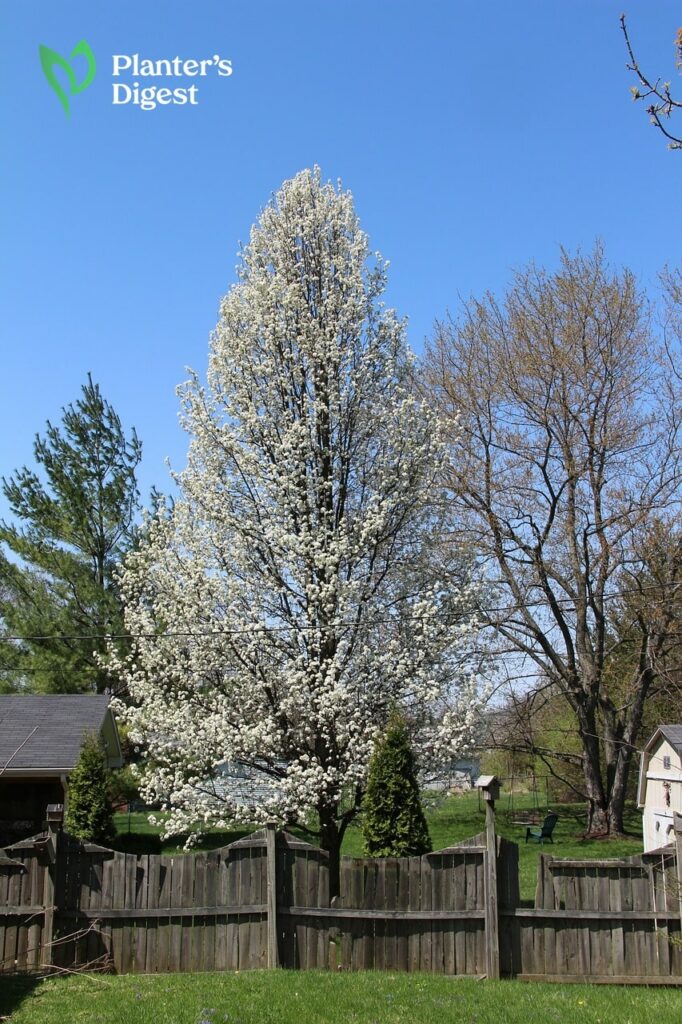
Chestnuts roasting on an open fire? Why not complete the package by using it as firewood, too?
Chestnut is known as a sustainable and affordable firewood option. Let’s take a closer look at its unique fire characteristics and see how it performs compared to other types of firewood.
Is chestnut a good firewood?
Chestnut is great firewood for campfires and outdoor cooking. It gives off a medium heat of 18.3 million BTUs per cord but produces a lot of smoke and sparks, so it is safer to use for outdoor burning activities.
This hardwood has a high smoke output and a pleasant aroma. It’s easy to split and not as heavy as other hardwoods.
It’s best to use chestnut firewood only in a wood stove with a screen or a door since it produces a lot of sparks while burning.
Chestnuts are also considered an eco-friendly firewood option because they grow fast and can be continuously harvested without causing damage to the environment.
Here’s an overview of the characteristics of the chestnut as firewood.
| Tree Name | Chestnut |
| Scientific Name | Castanea sativa |
| Family | Fagaceae |
| Height | 40 to 80 feet |
| Life Span | 300 years |
| Type of Wood | Hardwood |
| Dry Weight (lbs per cord) | 2,652 |
| Green Weight (lbs per cord) | 4,675 |
| Seasoning Time | 2 years |
| Heat Content (million BTUs per cord) | 18.3 |
| Sap Content | Low |
| Splitting Difficulty | Easy |
| Smoke | High |
| Smell | Mildly sweet |
| Coal Production | Poor |
| Creosote Build-up | Low |
Fire Characteristics of Chestnut Wood
Chestnut firewood is an easy-to-split, low-sap wood with medium heat output, but it produces creosote, smoke, and poor coal.
Let’s look at each characteristic and see how chestnut firewood burns.
1. Easy to Split
Chestnut wood has straight grains, making it easy to split using an axe. We recommend splitting it along the grain to prevent the wood from breaking into smaller pieces.
2. Low Sap Content
Chestnut trees produce sap that is usually harvested to create syrup products.
Fortunately, since wood is composed of dead cells, chestnut firewood has low sap content. This makes it ideal firewood with a cleaner burn and less creosote output.
3. Medium Heat Output
Chestnut wood is a good choice for fireplace or wood stove heating due to its 18.3 BTU million per cord medium heat output.
Its heat capacity is similar to boxelder, hemlock, and aspen firewood but lower than popular hardwoods like beech and oak.
| Firewood | Heat Output (million BTU per cord) |
| White Oak | 29.1 |
| Beech | 27.5 |
| Black Walnut | 22.2 |
| Coffee Tree | 21.6 |
| Hemlock | 19.3 |
| chestnut | 18.3 |
| Aspen | 18.2 |
| Boxelder | 18.0 |
| Alder | 17.5 |
| Basswood | 13.8 |
| Buckeye | 13.8 |
4. Low Creosote Build-up
When burning wood in a fireplace, you should stay on top of the creosote buildup, a black, tar-like and flammable substance that can be a safety hazard in your home.
Luckily, chestnut firewood produces less creosote. So you’ll do less chimney sweeping when you burn chestnut in your fireplace.
5. High Smoke Output
When burned, chestnut wood produces a lot of smoke due to its high moisture content. Here’s how chestnut’s smoke output compares with other firewood.
| Wood type | Smoke production |
| Chestnut | Moderate |
| Douglas fir | High |
| Oak | Low |
| Maple | Low |
| Hickory | Low |
6. Poor Coal Production
Coal helps firewood retain heat and prolong its burn time.
Unfortunately, chestnut firewood does not yield a lot of coal when burned. That’s why it’s not an ideal option if you’re looking for a stable heating source.
Pros and Cons of Using Chestnut as Firewood
We summarized the advantages and disadvantages of chestnut firewood in the table below.
| Pros | Cons |
| Easy to split | Sparks a lot |
| Medium heat output | Poor coal production |
| Slow-burning | Long seasoning time |
| High smoke output |
Chestnut is a good choice for those looking for an easy-to-split, low-sap firewood with medium heat output.
This soft wood makes it easy to split, so you can exert less time and effort to harvest and prepare it for seasoning. Its relative softness also makes it a great wood to start a fire with.
However, you should be more cautious about chestnut firewood’s high smoke production. When burned, it can produce sparks and a lot of smoke, so it’s best used in a covered fireplace, wood stove, or outdoor cooking.
How does chestnut compare with other firewood?
Chestnut is dense, which makes it burn hotter than most softwoods. Its high density also allows it to sustain hot fire for extended periods.
Although most people don’t consider chestnut because of its high smoke output, its slow-burning properties still make it a better firewood option than cedar or poplar wood.
Check out the table below to compare chestnut with other types of wood:
| Firewood | Heat Output | Burn Time | Smoke Output | Scent |
| Chestnut | Medium | Long | Low | Mild |
| Oak | High | Long | Low | Mild |
| Hickory | High | Long | Medium | Strong |
| Pecan | High | Long | Low | Mild |
| Ash | Medium | Long | Low | None |
| Pine | Low | Short | High | Strong |
How long should you season chestnut wood?
Chestnut wood takes at least two years to dry out completely. During this long period, the wood loses moisture to emit the least smoke, creosote or other harmful toxins into the air when burned.
We recommend storing your chestnut wood in a shed or garage or covering it with a tarp to protect it from moisture, rain or snow.
Once thoroughly seasoned, you can now enjoy your chestnut firewood’s hot, clean fire in fireplaces, wood stoves, and outdoor fire pits.
FAQs on Chestnut Firewood
The most common chestnut wood varieties include American chestnut, dwarf chestnut, Chinese chestnut, and sweet chestnut trees.
Chestnut is not an indoor firewood because of the high amount of smoke and sparks that it creates. But if you want to use them indoors, burn them using a log burner or a fireplace with screens or doors.
Chestnut firewood burns for 2 to 3 hours, depending on the size of the wood and the chestnut variety.
Chestnut firewood is not a good choice to burn in a stove or fireplace because of its low heat, high smoke output, and burning quickly.




